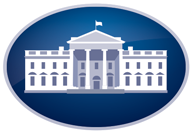

The President’s Weekly Address post is also an Open News Thread. Feel free to share other news stories in the comments.
From the White House – Weekly Address
This week, President Obama discussed Open Enrollment on the Health Insurance Marketplace, which began November 1 and will end on January 31. Thanks to the Affordable Care Act, 20 million American adults have obtained health insurance, and an additional three million children have gained coverage since the President took office. The uninsured rate is the lowest level on record. Today, thanks to the Affordable Care Act, your preventive care is free; there are no more annual or lifetime limits on essential health care; you can’t get charged more just for being a woman; young people can stay on a parent’s plan until they turn 26; seniors get discounts on their prescriptions; and no one can be denied coverage because of a pre-existing condition. To sign up for health care coverage, visit HealthCare.gov or call 1-800-318-2596.
Transcript: Weekly Address: The Progress We’ve Made Because of the Affordable Care Act
Remarks of President Barack Obama as Prepared for Delivery
Weekly Address, The White House
November 5, 2016Hi, everybody. Americans have been fighting for the idea that health care is a right and not a privilege since the second-to-last time the Cubs won the World Series. I’m not talking about the 2016 Cubs – I’m talking about the 1908 Cubs.
That’s a really long time. And thanks to the efforts of so many of you, we did it. Today, 20 million more American adults know the financial security of health insurance. On top of that, another three million more kids have coverage than when I took office. In fact, never in American history has the uninsured rate been lower than it is right now – and health care prices have been rising slower than they have in 50 years.
If you haven’t gotten covered yet, now’s the time to do it. It’s open enrollment season. That means you can go to HealthCare.gov and shop for insurance plans in a marketplace where insurers compete for your business. HealthCare.gov is faster and easier to use than ever before. With a few clicks, you can start comparing plans to see which one is right for you and your family. You can even look up your doctor and medications as you shop. Most Americans who get coverage through HealthCare.gov can find an option that costs less than $75 a month. That’s probably less than your cell phone bill.
Now, most of us don’t get our health care through the Marketplace. We get it through our job, or through Medicare or Medicaid. And what you should know is that, thanks to the Affordable Care Act, your coverage is better today than it was before. You now have free preventive care. There are no more annual or lifetime limits on essential health care. Women can get free checkups, and you can’t get charged more just for being a woman. Young people can stay on a parent’s plan until they turn 26. Seniors get discounts on their prescriptions. And no one can be denied coverage just because of a preexisting condition.
That’s because our goal wasn’t just to make sure more people have coverage – it was to make sure more people have better coverage. And as we continue working to make the system better, there’s something you can do to help yourself and help the country. Go to HealthCare.gov. Get covered. And if there’s someone you care about who hasn’t signed up yet, help them get covered today, too.
Enrollment is open right now, but only until January 31. If you sign up by December 15, you’ll be covered by the beginning of the year. So go check out HealthCare.gov or call 1-800-318-2596, and someone will personally help you find a plan that’s right for you.
Insurance is based on the idea that we’re all in it together. That’s what makes it work. And it’s the same idea that’s always made America great. Thanks everybody, and have a good weekend.
Bolding added.
~

The Obama administration announces plans for electric car charging grid …
From the DOT and the Federal Highway Administration:
In Florida, Latino activists help push against Amendment 1, a measure intended to kill the solar power industry …
More “Progress We’ve Made” on the line: Fate of Obama legacy initiatives in hands of courts, successor
At risk, the Clean Power Plan: